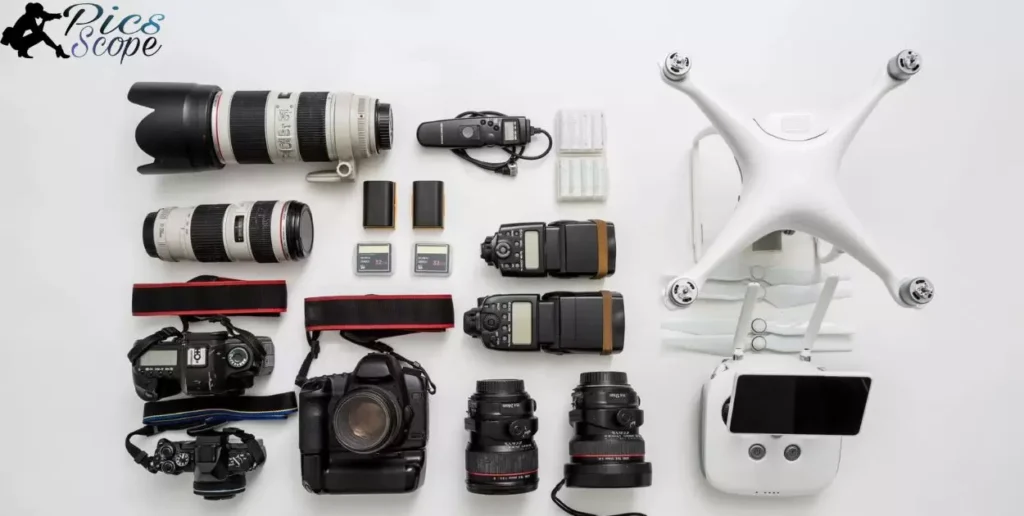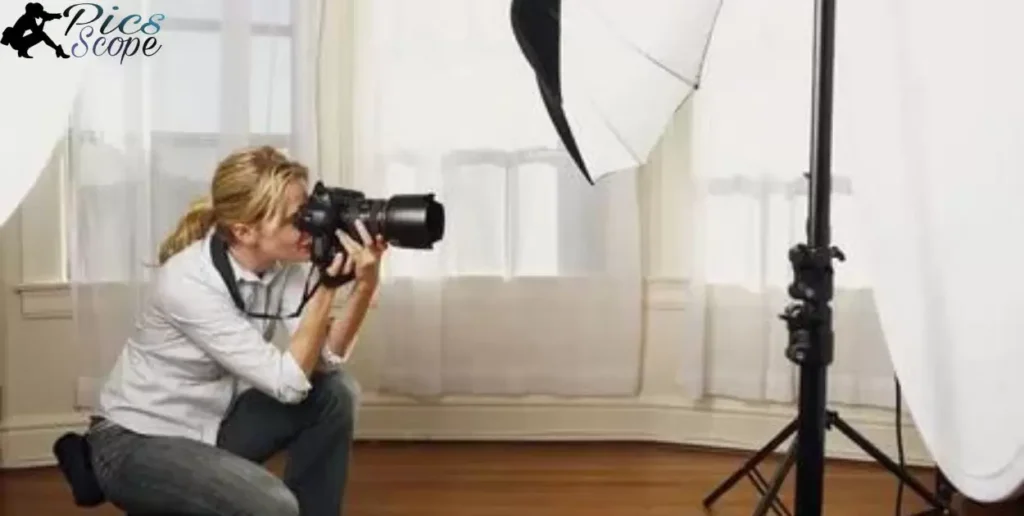Photography is the art, application, and practice of capturing light and recording it digitally or chemically as images. Photography uses lenses and light to capture scenes. Photographs can be created by using cameras to take pictures.
Tips to start photography include learning your camera. Most basic cameras have simple controls for adjusting settings like exposure, zoom, and focus. Play with your camera and take many pictures to learn what each option does. Changing settings will help you understand how they affect your photographs.
Starting photography is easy and fun. Begin with your camera’s automatic settings until getting familiar with it. Take pictures of anything that interests you like nature, people, or daily activities. Don’t worry about mistakes as photography improves with practice. Review your pictures often to see what worked best and how shots could be improved next time.
Getting started with photography
Photography is a fun hobby to get into. All you need is a camera to start taking pictures. Make sure to have your camera charged up before leaving home. Take your camera with you whenever you are out. Look for interesting things to photograph around you like nature, people and architecture.
When first starting out, keep your photos simple. Don’t try complex techniques yet. Focus on getting the right exposure and framing your shots well. Practice regularly so you improve quickly. Review your photos often to see what you can improve on. Ask other photographers for tips to help you learn new skills.
What equipment do I need for photography?

All you need to get started is a reasonably priced digital camera. An entry-level DSLR or mirrorless camera will provide good image quality. Make sure to also get spare batteries as you will use power quickly. You should obtain extra memory cards to hold all your photos.
Consider purchasing a basic lens too for your camera body. A lens like a 18-55mm will cover general use. Carry your camera safely in a bag when out shooting. Other useful accessories are external flashes, tripods and lens filters for specific effects. Only purchase extras as your skills progress.
How do I learn photography basics?
Learn camera controls like shutter speed, aperture and ISO first. These allow manual exposure control. Practice taking shots at different settings till you understand each role. Read photography tutorials online or books for more guidance. Sign up for local classes taught by experts.
Watch photography videos to visually see techniques in action. Following photography Instagram accounts can provide fresh ideas. Try different genres like landscapes, portraits to find your favorite type. Be patient as improving skills takes time. Enjoy the process of learning through taking lots of photos.
What types of photography are there?
Some common types include landscape, portrait, street, sports, wildlife and macro photography. Landscapes involve photographing scenic natural or urban views. Portraits focus on people, their expressions and poses. Street photography captures candid shots of everyday life on the streets.
Other genres are underwater photography using waterproof cameras. Aerial photography uses drones or planes to shoot from above. Astrophotography records celestial objects at night or in long exposures. There are many types to explore and find what inspires you most as a photographer.
How does a camera work for photography?
Cameras have optical lenses to focus light and sensors to capture the light information. When you press the shutter button, the sensor is exposed for the set duration by the shutter. Modern cameras have digital sensors which convert light into digital signals recorded as images files.
The sensor size affects the photo quality, with larger sensors providing better image quality. DSLR cameras use interchangeable lenses, while mirrorless cameras provide similar quality in a smaller body without a mirror assembly. Understanding basic camera functions will help get better pictures.
What are the different camera modes in photography?

Core modes on most cameras include Program, Aperture Priority, Shutter Priority and Manual. Program mode is best for auto settings. Aperture Priority adjusts aperture while keeping ISO and shutter optimized. Shutter Priority controls shutter speed primarily.
Manual mode allows setting all exposure parameters like aperture, shutter speed and ISO manually. Other modes like scene modes, portrait, landscape, auto adjust settings for certain conditions. Some cameras have creative filters for special artistic effects too. Choose modes based on the shooting situation and required control.
How to capture good photographs with manual settings in photography?
Shooting in full manual mode gives most control over the exposure settings. Set ISO first based on lighting, then aperture to control depth of field as required. Adjust shutter speed until the shutter light indicates good exposure.
Focus manually if using older DSLRs by pressing the shutter halfway first. Use faster shutter speeds like 1/500 for still subjects or blur movement. For landscapes, slower shutters like 1/30 can blur waterfalls nicely. Use exposure meter and histogram for accurate exposure too. Practice to understand how each setting influences the final photo.
Why is composition important in photography?
Proper composition can elevate ordinary photos and make a big impact. The composition rules like Rule of Thirds can balance the subject and elements better. Framing objects strategically and leaving space around them is ideal.
Think about leading lines in shots that draw the eyes into the image naturally. Consider the perspective or angle used when shooting a scene too. Simplify backgrounds to avoid distractions. Balance both technical and compositional skills for polished photos.
How do I get better at wildlife and nature photography?
Being patient is important for nature photography. Watch animal behaviors closely to pick the best moment to shoot. Use long telephoto lenses to get close without scaring animals. Wake early and stay late to photograph at golden hours of early morning and evening.
Learn to anticipate an animal’s actions. Capture moments like birds in flight with fast shutter speed. For plant life photography, look for interesting macro close ups too. Join outdoor photo clubs to learn from experienced wildlife photographers.
Where can I find photography inspiration and ideas?
Browse photography books from masters in different genres. Follow inspirational artists online through blogs, YouTube and Flickr. Join relevant forums and communities to discuss with other creatives. Save photos that attract you to review later for style ideas.
Keep an eye out for exhibitions at galleries of pictures that intrigue you. Travel locally or further to find new scenic or cultural sights to photograph. Look towards nature, architecture and everyday scenes surrounding you as common inspiration too.
How do I build a photography portfolio?
Curate a portfolio by selecting your best 15-20 images that show your skill variety. Edit photos and size them uniformly. Design the portfolio website to be visually pleasing and easy to navigate.
Include clear descriptions of your photos and thought process. Highlight various genres and projects to potential clients. Print some photos nicely to carry along for networking too. Always keep updating your portfolio with fresh work.
What are some photography subjects to try when starting out?
Begin with basic subjects that you have easy access to shoot. Try portraits of family, landscapes around your home, street photography near your place. Images of foods, flowers, stationary objects on your table also make good practice.
Simple macro shots of interesting textures found anywhere provides photo assignments. Try your hand at shooting with available light as well as experimenting with fill flash in your home. Review all photos taken to analyze critically what could be improved next time.
How do I market and showcase my photography work?
Create social media profiles on Instagram, Facebook, Flickr to share your images. Engage online communities by commenting on others’ posts. Run contests on your pages to boost engagement.
Cold contact publications, blogs and businesses to pitch your work or collaborate for projects. Have business cards printed with your contact details. Put up quality photo prints in local cafes or doctor’s offices too for exposure. Invest in a custom photography website.
When should I invest in new photography gear?
If your current gear is restricting your creative growth, it may be time for an upgrade. For example, a camera has insufficient dynamic range or autofocus challenges. Lenses are important too – upgrade when limitations are beyond your control through skills.
Once skills have improved significantly, it’s fine to indulge in additional gear for specific genres you shoot frequently. Study specifications thoroughly before purchases to avoid unnecessary expenses. Rent high-end equipment sometimes to experience quality without long-term costs.
How do professional photographers make a living with photography?

They offer services like portrait, product, architectural and event photography. Land commercial assignments from ad agencies and companies. Sell fine art prints and photography books. Teach workshops and photography classes.
Freelance for publications through assignments on location. Curate and operate photography exhibitions. Develop and sell presets,actions and Lightroom packages online. Maintain a YouTube channel for online lessons and gear reviews as well. Diversify revenue streams through various avenues.
What photography communities can help improve my skills?
Joining local photography groups exposes you to photographers at various levels. Ask questions and share knowledge through monthly meets. Follow international online communities like Reddit Photography for daily discussions.
Get involved in forums specific to your favorite genres. Connect through community-run field trips, lessons and collaborations. Many also volunteer for wildlife or conservation non-profits shooting nature. It’s inspiring working with like-minded creatives.
How do I take photography as a hobby or career?
As a hobby, enjoy the process without pressure.Focus on self-improvement through practice. Share photos online and get feedback from other amateur photographers.
If considering professionally, build an online presence and portfolio first. Assist established pros to learn commercial techniques hands-on. Market constantly through various platforms to find clients. Consider specialized education or certifications too for advanced skills. Decide based on passion and interests long term.
What’s the future of photography in the digital age?
Technology will keep progressing photography. Cameras will utilize artificial intelligence for better automatic settings. Computational photography will change how photos are taken using multiple exposures.
High resolutions will redefine printable large format wall art. Virtual and augmented reality applications are increasing too. While gear improves, the creative fundamentals of light, composition and storytelling will remain core to the photographic experience despite changing times. Innovation continues enriching both art and artists.
FAQ’s
How can I begin my journey as a novice photographer?
Start by familiarizing yourself with your camera, exploring basic settings, and practicing composition techniques.
Can I learn photography on my own?
Certainly! Utilize online resources, tutorials, and practice regularly to develop your photography skills independently.
What are the initial steps to launch a photography venture?
Begin by acquiring a camera, understanding its functions, exploring various genres, and gradually building a portfolio.
How can I enter the world of photography with no prior experience?
Embark on your photography journey by investing in a camera, experimenting with different settings, and learning through hands-on experience.
What’s the first step in pursuing a career in photography from scratch?
Start by obtaining a camera, studying its features, experimenting with compositions, and gradually building your skills through consistent practice.
Conclusion
If you’re eager to embark on a journey into the captivating world of photography, the key is to start photography with enthusiasm and dedication. Begin by acquiring a camera that suits your needs and budget, and don’t be afraid to experiment with its settings. Remember, practice is essential, so grab your camera and start capturing moments, honing your skills with each click.
The process of learning how to start photography is a hands-on adventure. Whether you’re pursuing it as a hobby or aspiring to make it a career, the crucial step is taking that first shot. So, dive into the world of photography, explore, learn, and let your creativity flourish through the lens of your camera.







